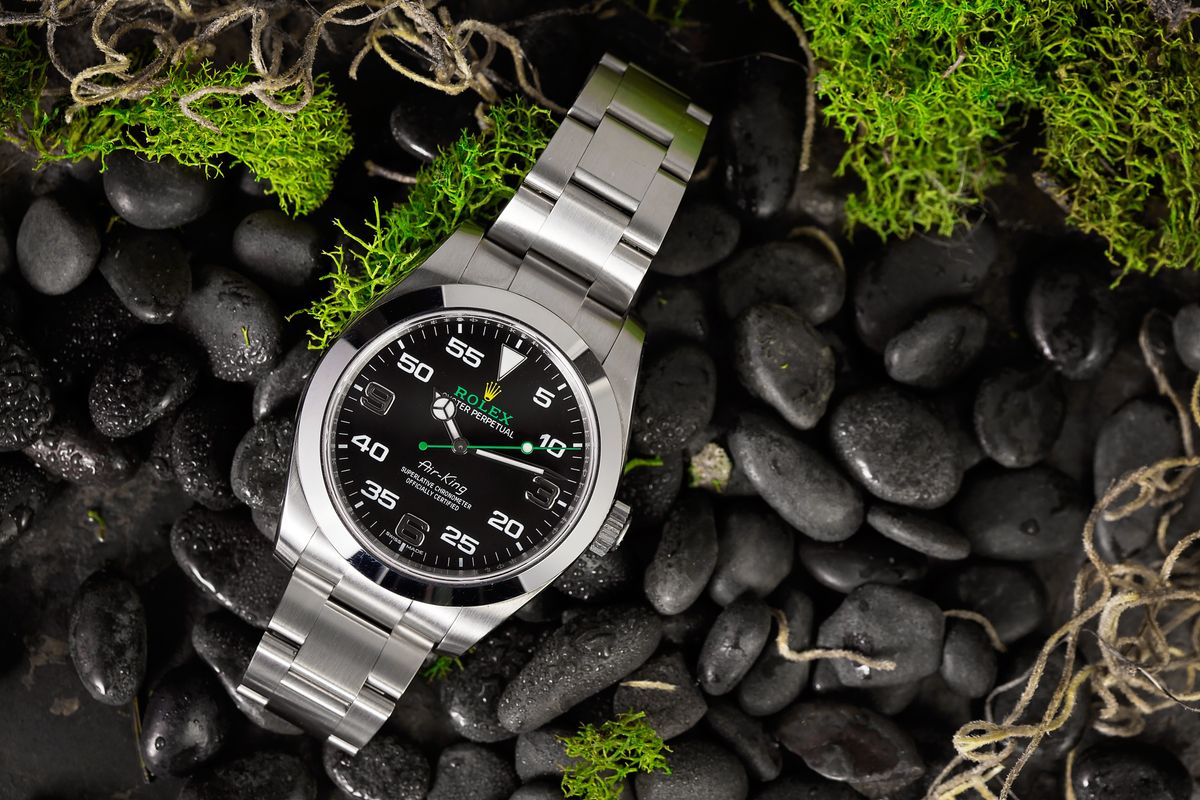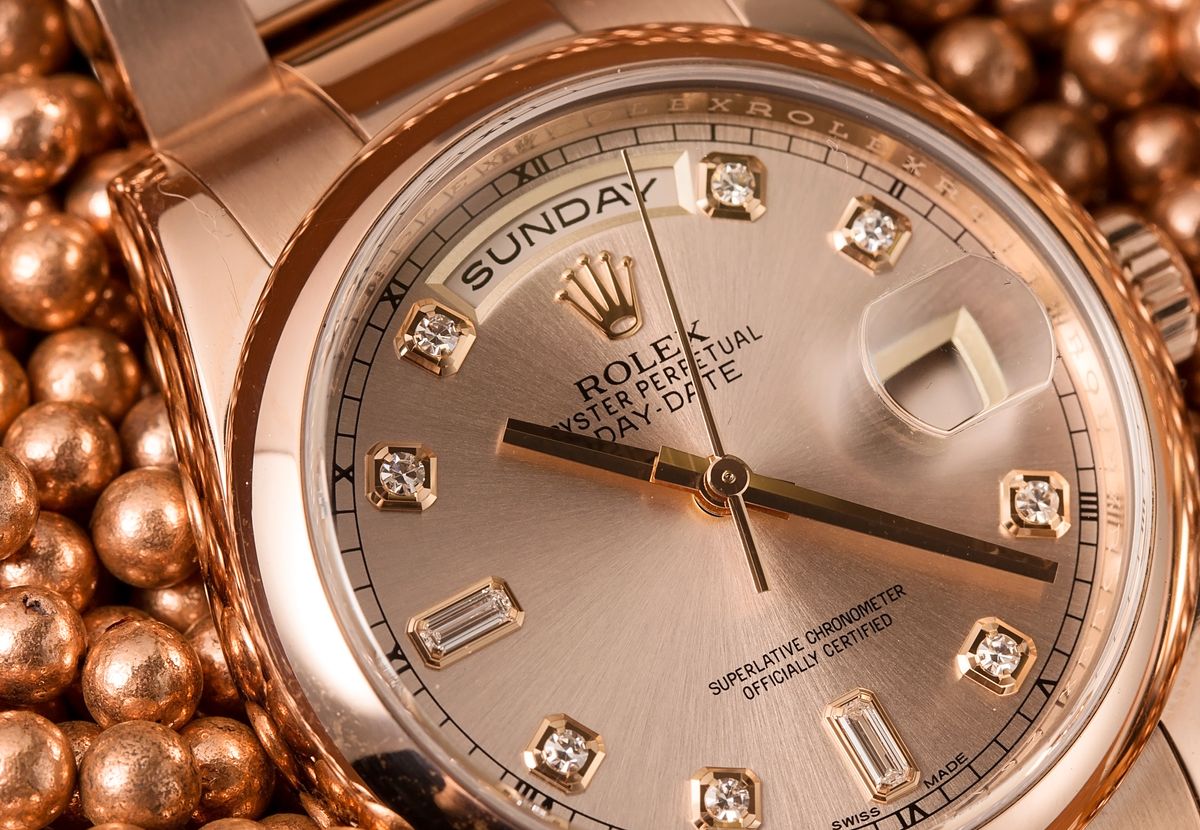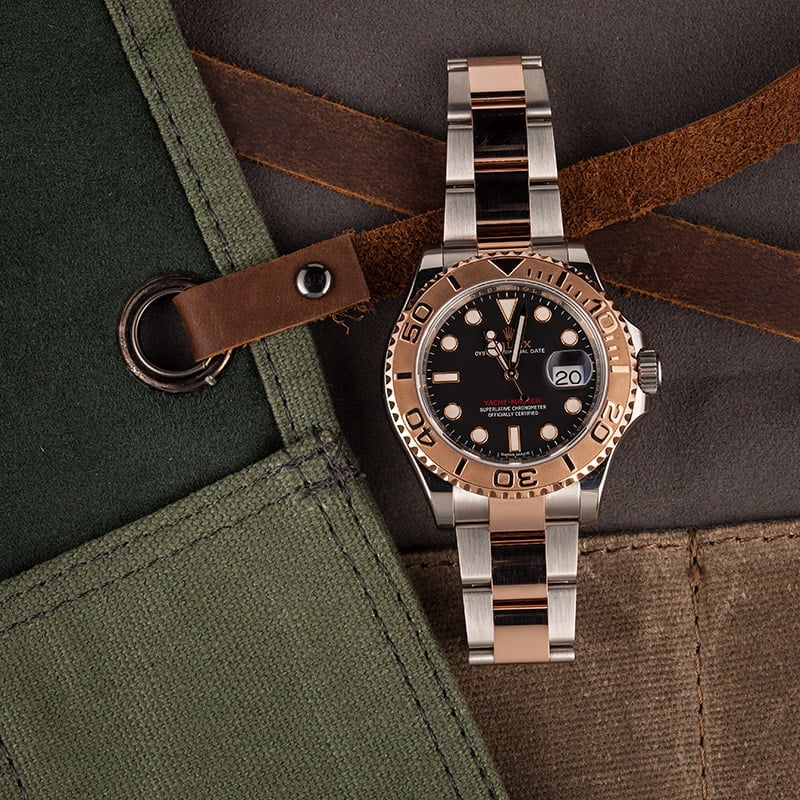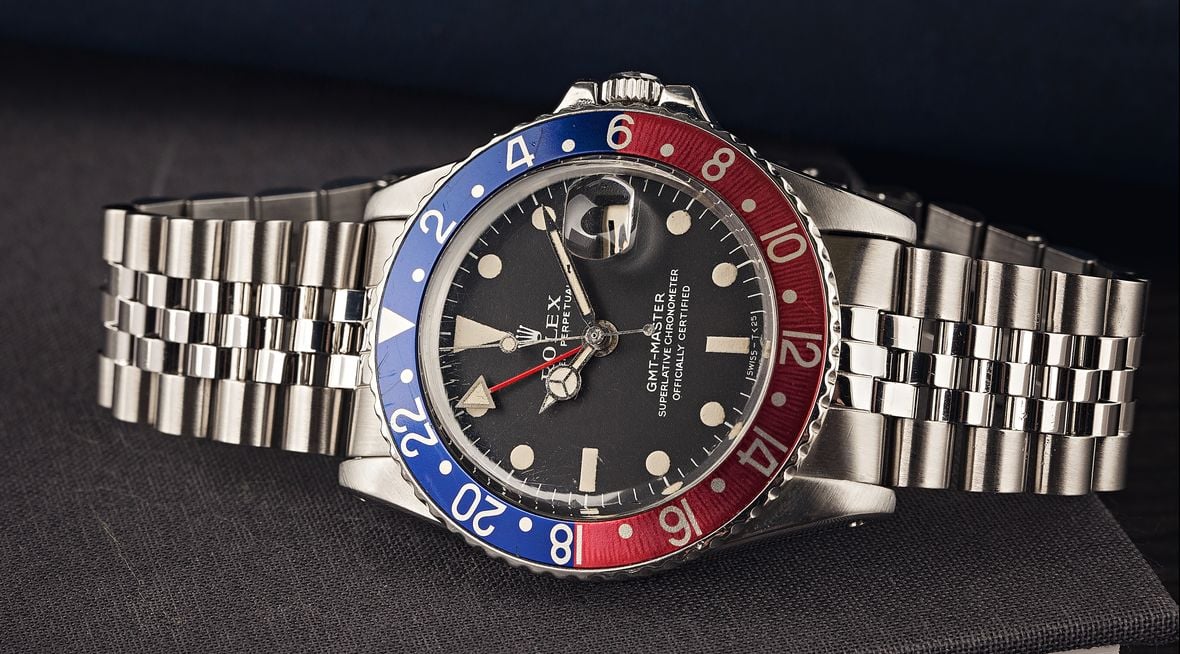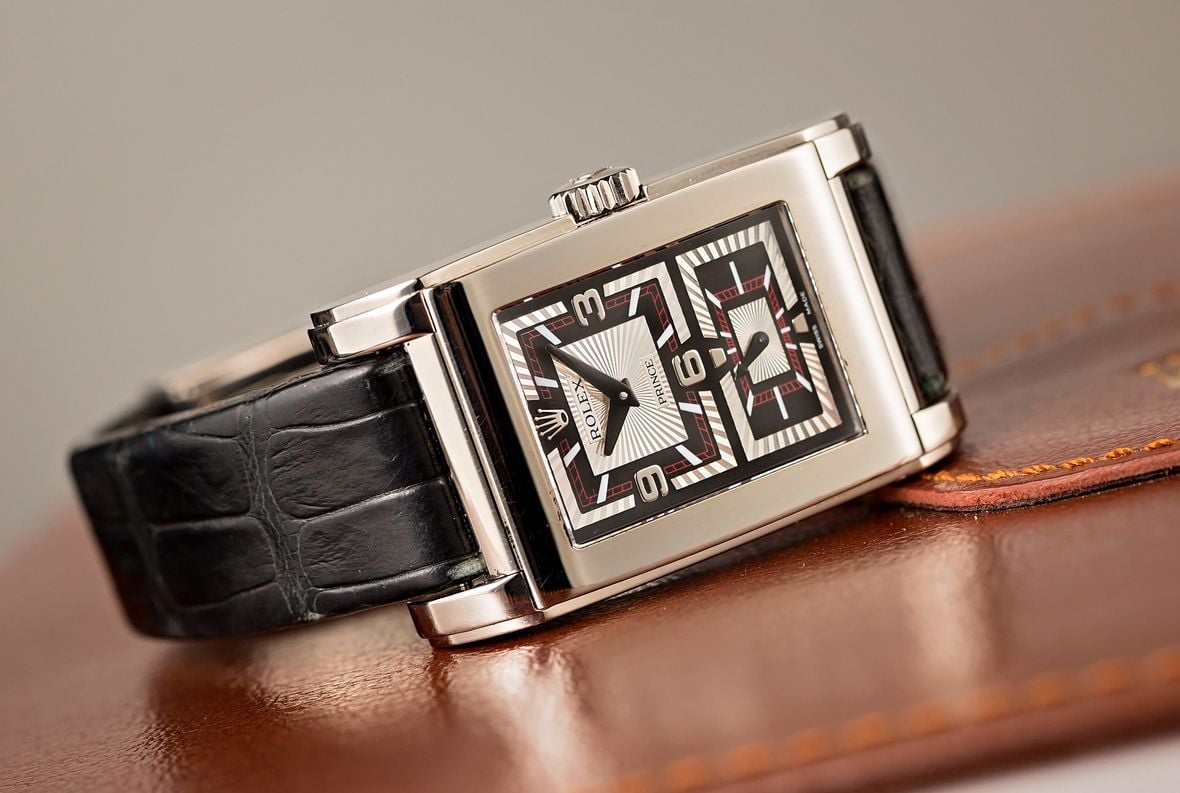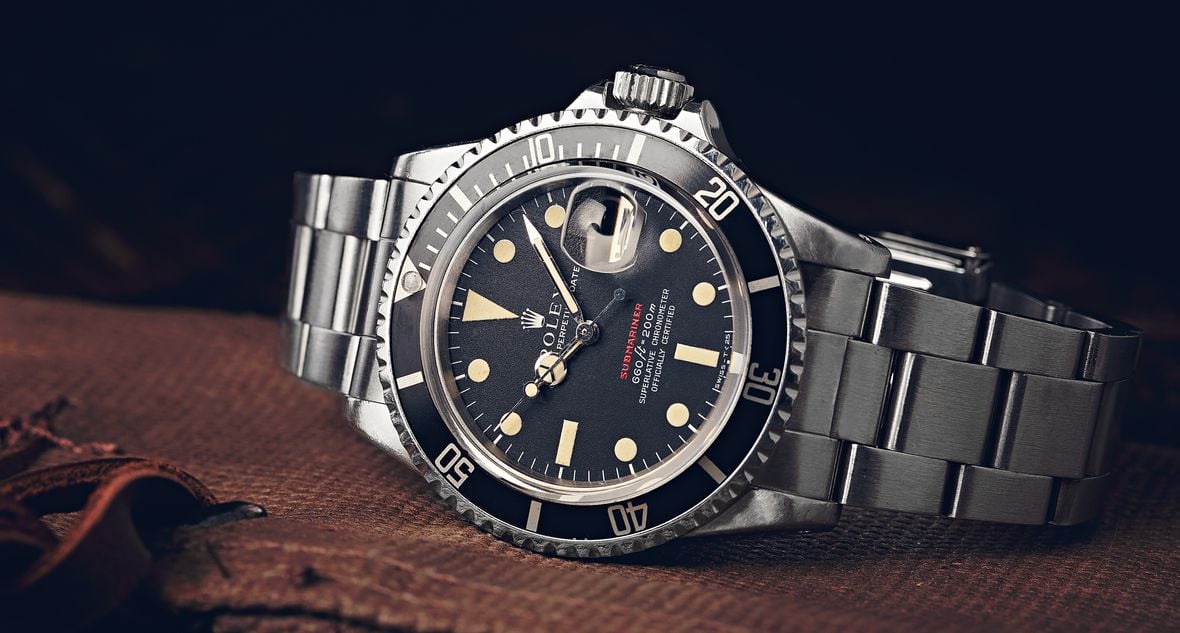The Rolex Air-King is one of the oldest names in the brand’s history, created during the Second World War and remaining in almost continuous production ever since. It is a watch with a more poignant backstory than most. Rolex already had an enviable reputation for making capable pilot’s models before the start of the war, scoring an early triumph by supplying timepieces to the Houston Expedition in 1933, the first time an aircraft managed to fly above the summit of Mount Everest. By the time WWII broke out six years later, the British Royal Air Force was issuing its crews with the company’s 30mm Speedkings, but the aviators were swapping them for the recently introduced and much larger Bubbleback models, paying for them out of their own pocket.
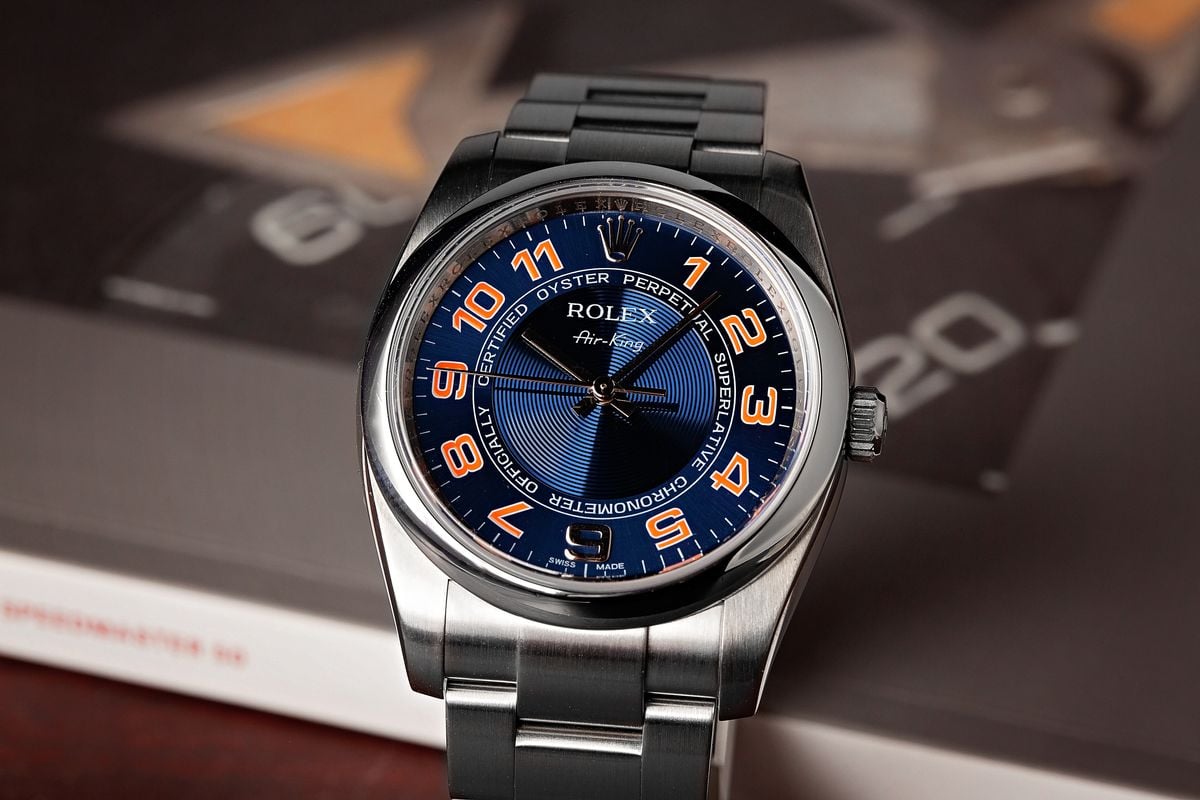
When word of this reached Rolex founder Hans Wilsdorf, he commissioned a series of ‘Air’ watches to honor these pilots and to commemorate the RAF’s impossible victory against the Luftwaffe during the Battle of Britain in 1940. Large (for the time) and simple, the range was made up of the Air-Lion, Air-Tiger, Air-Giant, and Air-King. By the end of hostilities, only the Air-King was still being made, a 34mm piece with the reference 4925. Since then, the model has gone through a number of different iterations, although not as many as you would think for a watch now currently in its eighth decade.
Although it is now definitely part of the Professional Collection of Rolex tool watches, the Air-King has always stayed on the fringe, more a cult favorite than one of the mainstream big hitters. However, during its time, it has given us a number of classics, including some truly great examples of unassuming elegance and stylish sophistication. Below we take a closer look at four of the most important references from the Rolex Air-King collection.
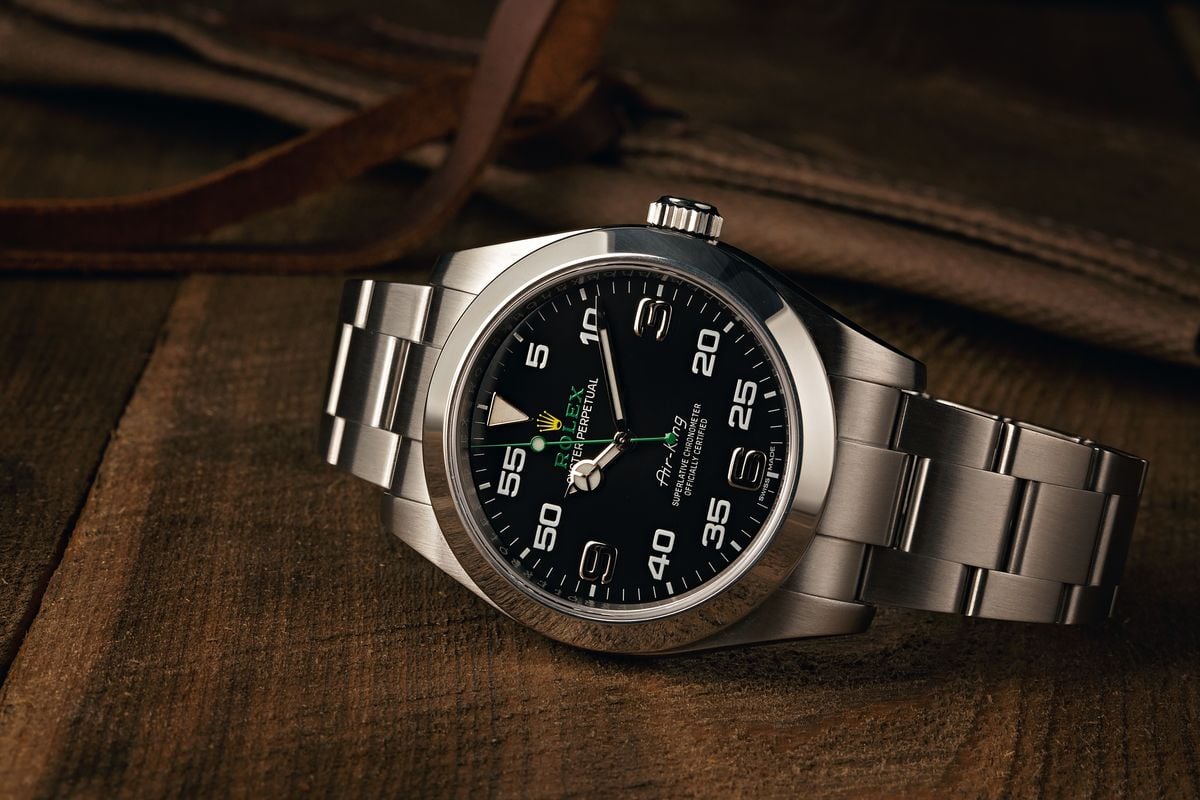
Rolex Air-King ref. 5500

Released in 1957, the ref. 5500 was the fourth generation of the Rolex Air-King, and the reason there are not as many different versions of the watch as might be expected. Not superseded until the late 80s, the reference 5500 stayed in production for an incredible 37-years. Due to its extreme longevity, the ref. 5500 is the model that most people associate with the archetypal Air-King look; 34mm, with a starkly austere dial design, plain stick hands, and not so much as a date display to distract attention.
During its run, the Rolex Air-King 5500 was issued with two different movements – the Cal. 1520 and the Cal. 1530 – neither one chronometer-rated. On many examples, you can easily tell which caliber a model has by the script on the dial. Many Cal. 1520 pieces have the word ‘Precision’ above the six o’clock index, or else no designation at all, while examples with Cal. 1530 movements often receive the ‘Super Precision’ making in the same location. Interestingly, it was the Cal. 1530 which was used first, with the Cal. 1520 not making an appearance until roughly 1963 and remaining in use until the retirement of the reference 5500.
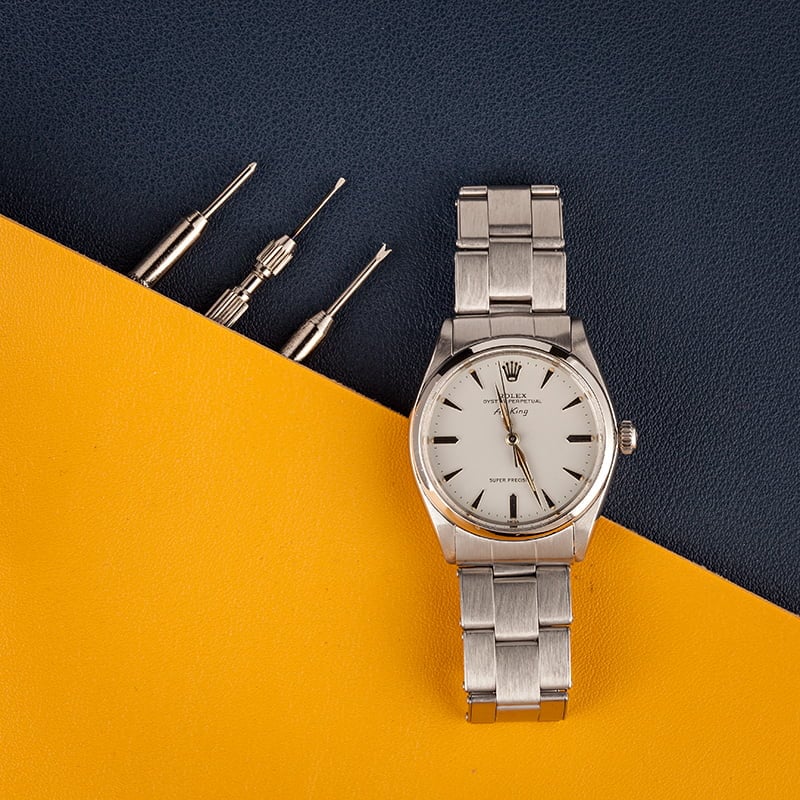
While the Cal. 1520 and Cal. 1530 both differed in design from many of Rolex’s other movements, in that they feature stick regulators and flat hairsprings, rather than Breguet overcoils with the Microstella system, the actual differences between the Caliber 1520 and 1530 were relatively minor. Both movements promised the same timekeeping specifications, with the primary difference being the number of jewels used in each movement – something that was primarily done to decrease the import/export tariffs that were charged on the watches. The models going to the U.S. market had only 17 jewels, while the rest of the world got 25 and 26 jewel varieties.
The confusing part starts with the ref. 5500 Air-King’s overlap with both the Oyster Perpetual and the Explorer. All three watches shared a case and movement for a while (although the 1530 movements used for the Oyster Perpetual versions were chronometer-rated). Therefore a search for a ref. 5500 Rolex will bring up examples with any of these three names on the dial. Additionally, to further complicate matters, the ref. 550X series appeared during roughly the same period – the ref. 5504 (a 36mm steel model), ref. 5501 (two-tone) and ref. 5502 (gold-capped). The good news is that the ref. 5500 is not only the cheapest Rolex Air-King reference, but it is also one of the least expensive vintage Rolex models of all time, which allows it to be an ideal gateway into brand ownership.
Rolex Air-King ref. 14000
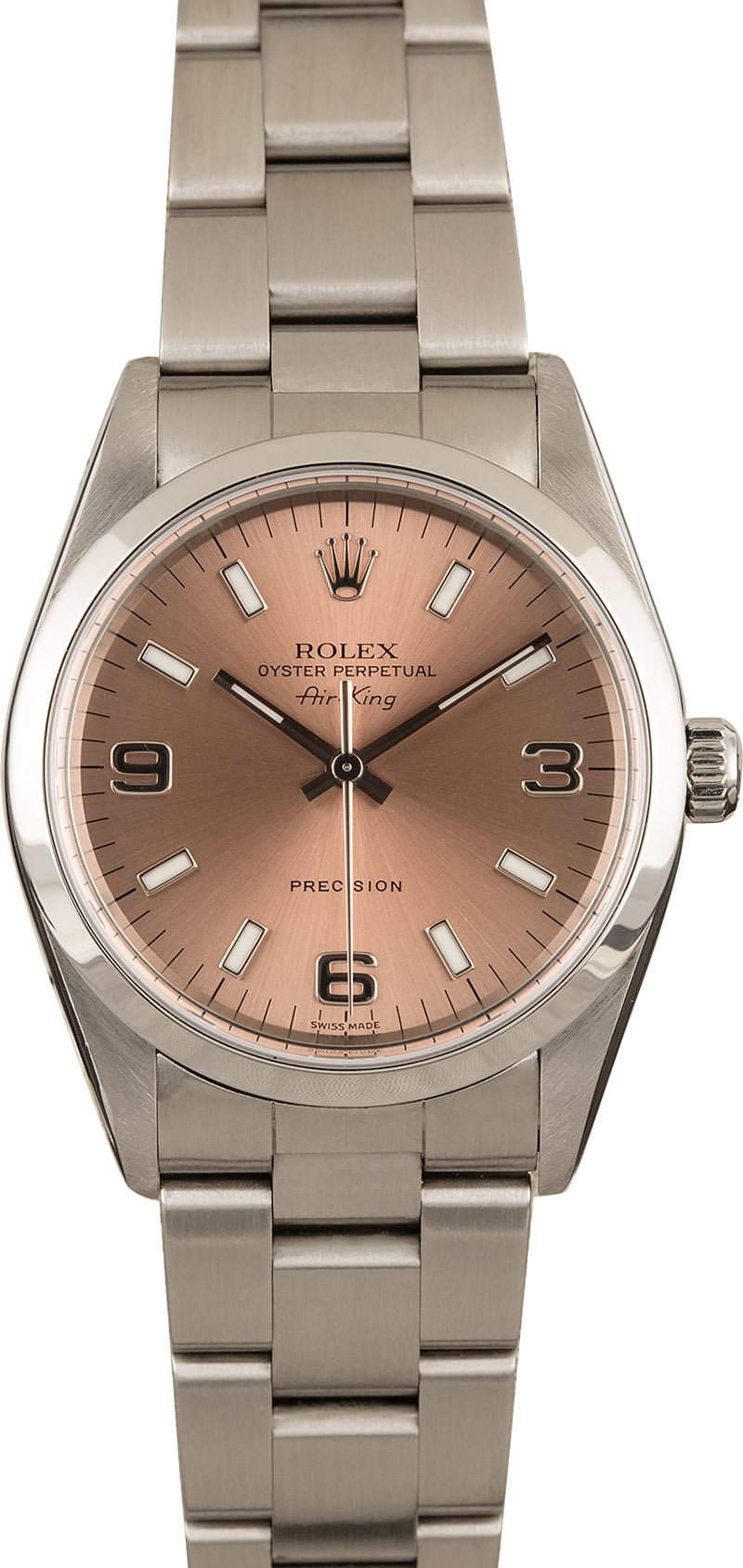
By the time the replacement for the ref. 5500 came along in the form of the ref. 14000, the various Rolex collections were becoming a lot more consistent and standardized. Launched in 1989, it followed many of the design cues of its predecessor, with its stainless steel case remaining at 34mm, and keeping the same overall modestly simple styling.
The biggest changes to accompany this generation of Air-King watches were the adoption of a sapphire crystal (instead of acrylic) and the introduction of a new caliber, the Cal. 3000. This was the first movement to give the Rolex Air-King the modern 28,800vph balance frequency, bringing the watch more in-line with the rest of Rolex’s offerings.
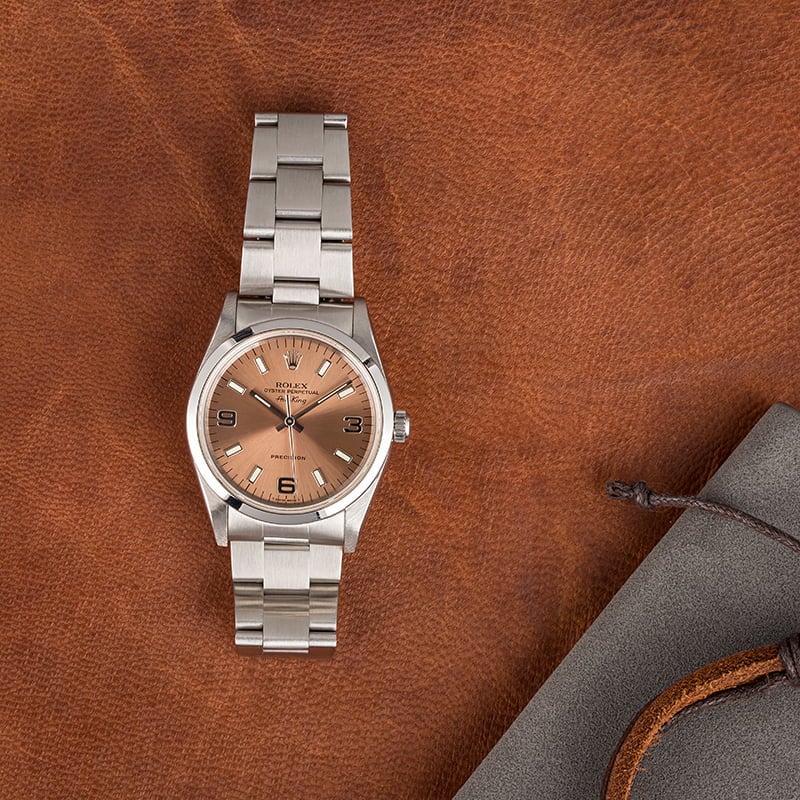
There were also a number of options available, with different dial colors issued including black, white, blue, and salmon pink. A choice in bezel was offered as well, either the traditional smooth polished type or an engine-turned version like the one found on the ref. 14010. However, even the Cal. 3000 wasn’t COSC-rated, meaning that the watch still wore the ‘Precision’ tag on its dial, rather than the ‘Superlative Chronometer Officially Certified’ label we are more used to seeing.
The reference was further updated in 2000 with the release of the ref. 14000M – with the ‘M’ standing for modified. This version was fitted with the Cal. 3130, ticking at the same rate but benefitting from a Breguet overcoil and a full balance bridge. Even still, these examples were not chronometer-certified, and are marked with ‘Super Precision’ on their dials, just like the previous generation. More expensive than the reference 5500 due to their upgraded movements and sapphire crystals, both the ref. 14000 and ref. 14000M represent real bargains among pre-owned Rolex watches.
Rolex Air-King ref. 114200
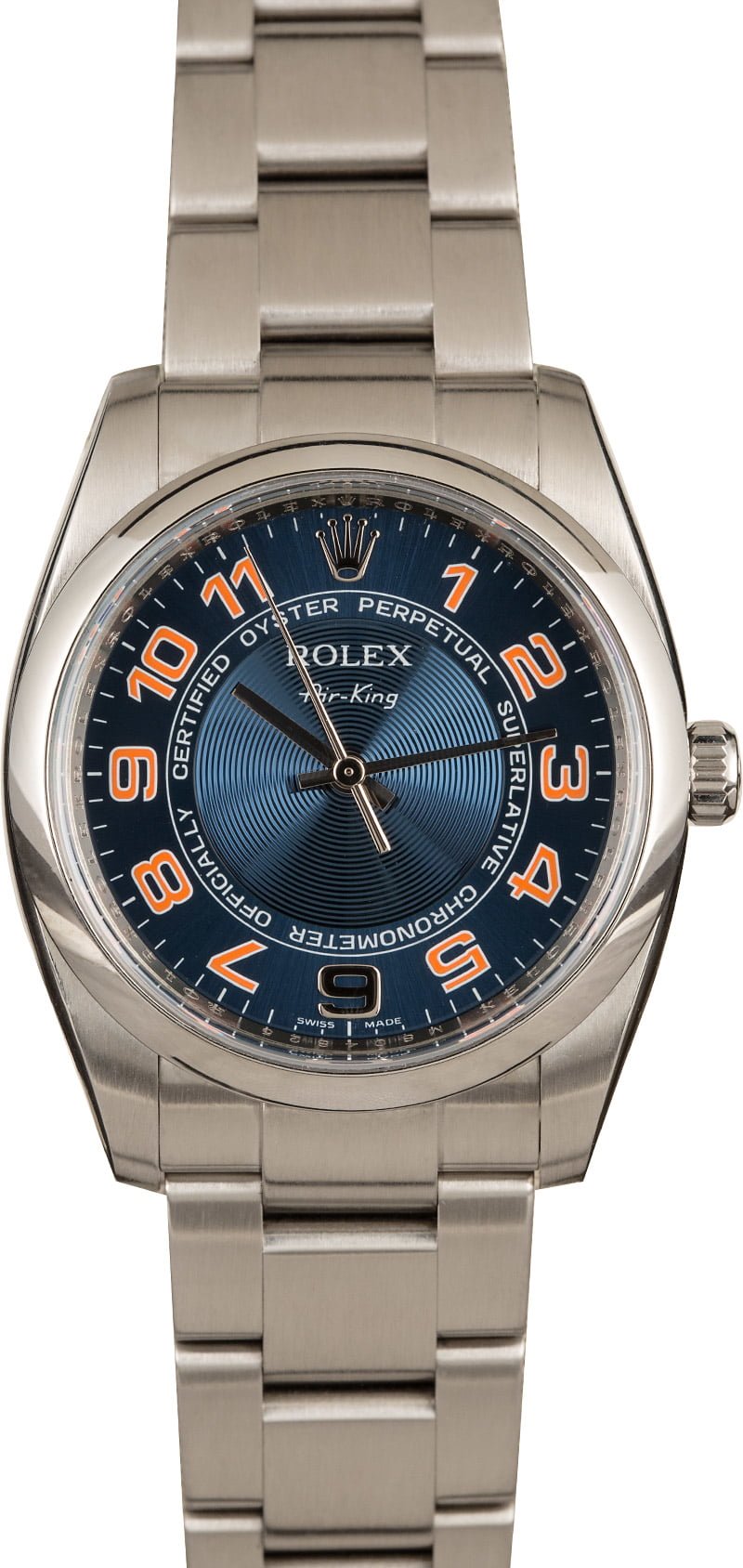
In 2007, the Rolex Air-King finally moved into a more modern era. Although the dimensions stayed at 34mm, the watch received a significant facelift, with the case thickened up and the lugs widened, giving the watch a noticeably larger overall appearance on the wrist.
A new solid link Oyster bracelet with a redesigned clasp replaced the former 78350 and the steel used throughout the watch was also uprated to the immensely strong and corrosion-resistant 904L. Additionally, a larger range of dial colors was added, and an 18k white gold fluted bezel became an option for the very first time.
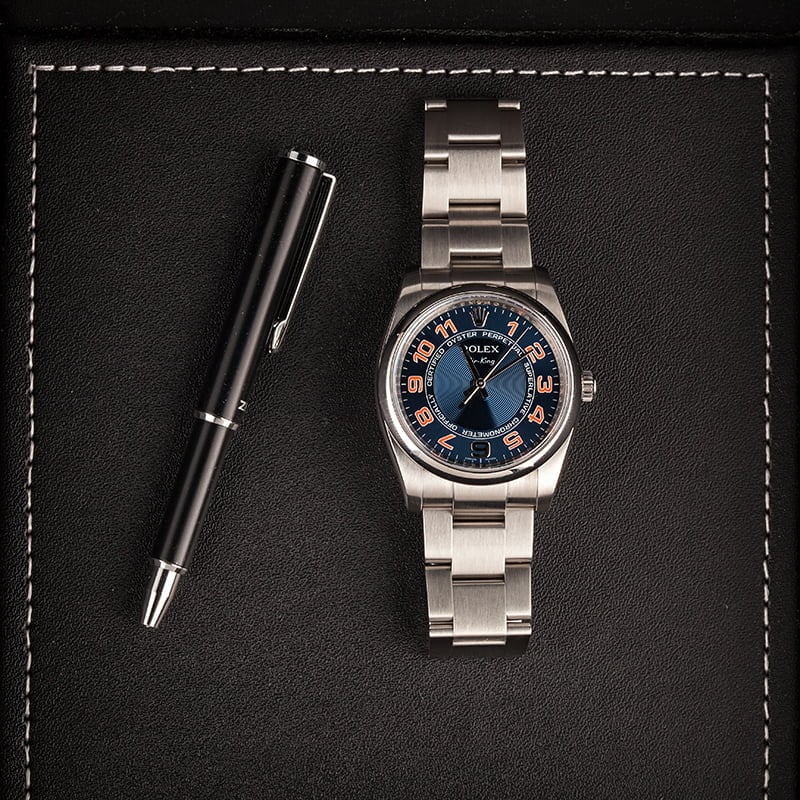
Most importantly, while it kept the same Cal. 3130 as its predecessor, it was now (at long last) an official chronometer-certified movement. The ref. 114200’s relatively short production run and its chronometer-rated movement make it an intriguing option for collectors. Easily obtainable on the secondary market for significantly less than most other Rolex models, it wouldn’t be a surprise to see the Air-King ref. 114200’s value increase sharply in the future.
However, as welcome and well-thought-out as the changes to this generation were, the Rolex Air-King’s days were numbered. In 2014, it was quietly withdrawn from the catalog entirely, with many expecting that was the last we would see of it, after more than seventy years of continuous production.
Rolex Air-King ref. 116900
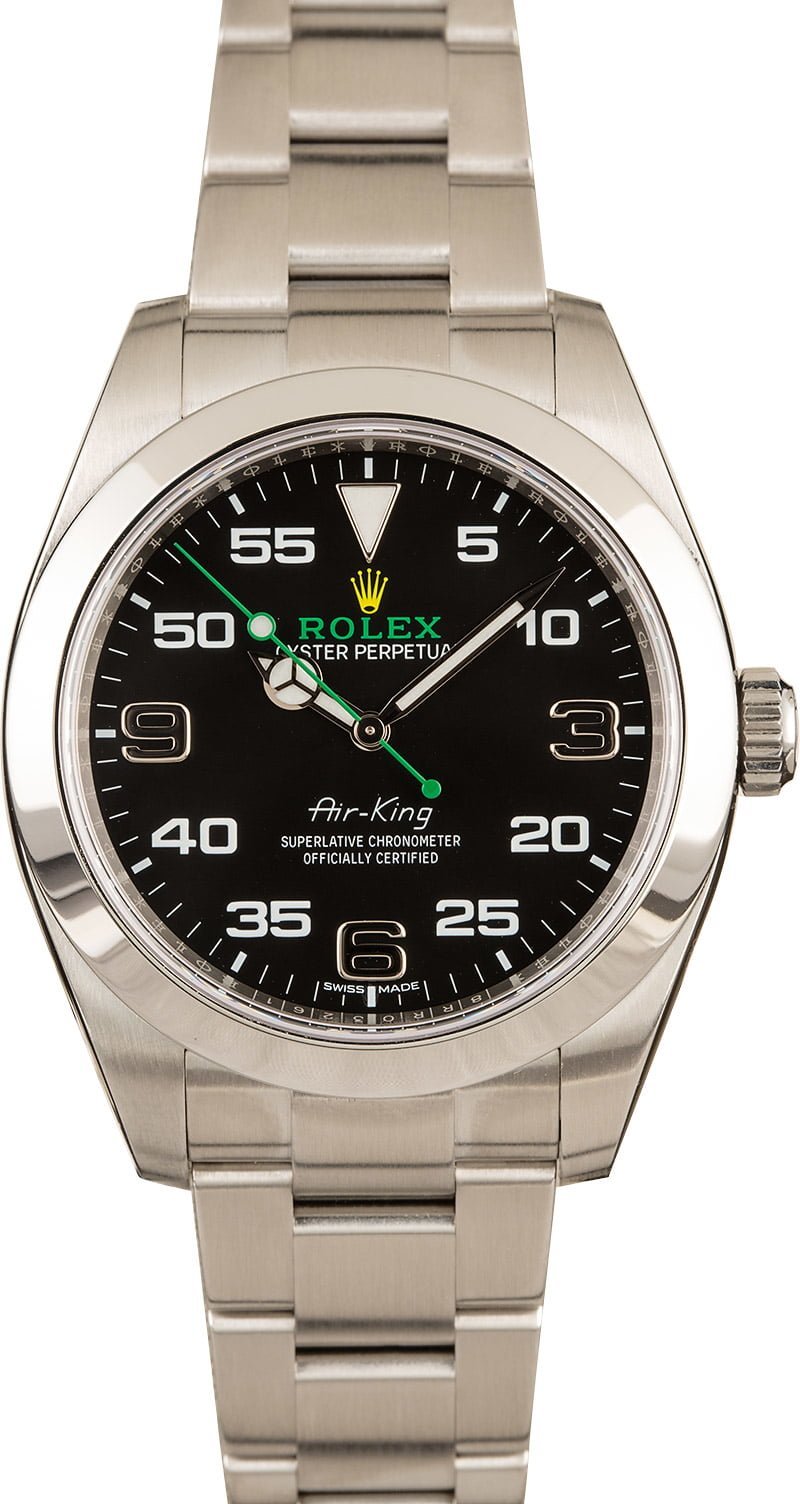
To everyone’s surprise, a vastly different take on the ‘Warrior’s Watch’ emerged just two years later in the form of the ref. 116900. Sharing a 904L steel case with the Milgauss ref. 116400, this current version of the Rolex Air-King measures 40mm and gains identical antimagnetic properties as Rolex’s famed scientist’s watch.
Just like how the current Air-King 116900 shares a case with the Milgauss, it also shares the same Cal. 3131 movement, complete with blue Parachrom hairspring and paramagnetic components. However, while the internals are as contemporary as possible, the exterior keeps one eye on the watch’s historic role.
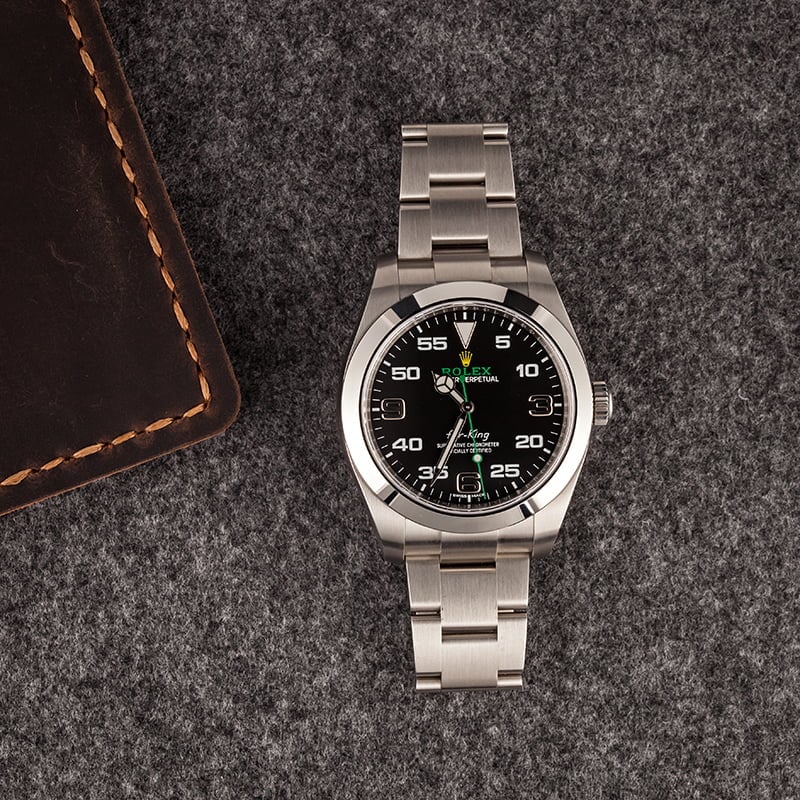
Only released in one version, the dial has been given the Explorer’s 3/6/9 hour indexes, but with the addition of prominent minute markers as well (printed in white), making it one of the most legible dials in Rolex’s current portfolio, and perfect as a pilot’s model. The black dial draws inspiration from vintage cockpit instruments and the ref. 116900 Air-King also holds the title of being the first and only piece from the brand to have the crown logo and the ‘Rolex’ title set in two different colors.
Today, with an official retail price of $6,450, the Rolex Air-King ref. 116900 lives in the same space as the likes of the Oyster Perpetual and Explorer, as one of the brand’s entry-level watches. And just like those two, it preserves the essence of what Rolex has always done best; make ruggedly stylish tool watches that last a lifetime.
The Rolex Air-King has had an immense history, one that is still going strong. In fact, its popularity today may be greater than it has ever been. Whether you decide to go for the contemporary model or one of the vintage classics, it offers almost unbeatable value.
